Complete Solutions to Problem For Practice(b) of chapter RAY OPTICS of Class 11 book with complete answers and questions
| Class 11 | PHYSICS |
| Chapter | RAY OPTICS |
| PRADEEP | Problem For Practice(b) |
| Number Of Questions | 66 |
| Academic Year | 2023-24 |
A mark is made on the bottom of beaker and a microscope is focussed on it. The microscope is raised through `1.5 cm`. To what height water must be poured into the beaker to bring the mark again into focus ? Given that `mu` for water is `4//3`.
View SolutionCalculate the speed and wavelength of light
(i) in glass
(ii) in air, when light waves of frequency `6 xx 10^14 Hz`. Travel from air to glass of `mu = 1.5`.
View SolutionThe refractive index of diamond is `2.47` and that of glass is `1.51`. How much faster does light travel in glass than in diamond ?
View SolutionA pond of depth `20 cm` is half filled with an oil of `mu = 1.4` and the other half is filled with water of refractive index `1.33`. Calculate apparent depth of the tank when viewed normally.
View SolutionA ray of light is incident at an angle of `60^@` on one face of a rectangular glass slab of thickness `0.1 m`, and refractive glass slab of thickness `0.1 m`, and refractive index `1.5`. Calculate the lateral shift produced.
View SolutionIn Fig., find the maximum angle `i` for which light suffers total internal reflection at the vertical surface.
 .
.
View SolutionCalculate the critical angle for glass air surface if a ray of light which is nicident ni air on the glass surface is deviated through `15^(@)`, when the angle of incidence is `45^(@)`.
View SolutionA small bulb (assumed to be a point source) is placed at the bottom of a tank containing water to a depth of `80 cm`. Find out the area of the surface of water through which light from thr bulb can emerge. Take the value of refractive index of water to be `4//3`.
View SolutionA refractive indices of glycerine and water are `1.46` and `1.33` respectively. What is the critical angle when the ray passes from gycerine to water ?
View SolutionA point source of monochromatic light 'S' is kept at the centre of the bottom of a cylinder of radius `15.0 cm`. The cylinder contains water (refractive index 4//3) to a height of `7.0 cm`. Draw the ray diagram and calculate the area of water surface through which the light emerges in air.
View SolutionWhen a fish looks up the surface of a perfectly smooth lake, the surface appears dark except inside a circular area directly above it. Calculate the angle that this illuminated region subtends. Given `mu` of water `= 1.333`.
View SolutionA right prism is to be made by selecting a proper material and the angles A and B `(BleA)` as shown in figure. It is desired that a ray of light incident normally on AB emerges parallel to the incident direction after two internal reflection.a. What should be the minimum refractive index `mu` for this to be possible? b. `For mu=5/3` is it possible to achieve this with the angle A equl to 60 degrees?
View SolutionA beam of light consisting of red, green and blue colours is incident on a right angled prism, fig. The refractive indices of the material of the prism for the above red, green and blue wavelengths are 1.39, 1.44 and 1.47 respectively. The prism will `
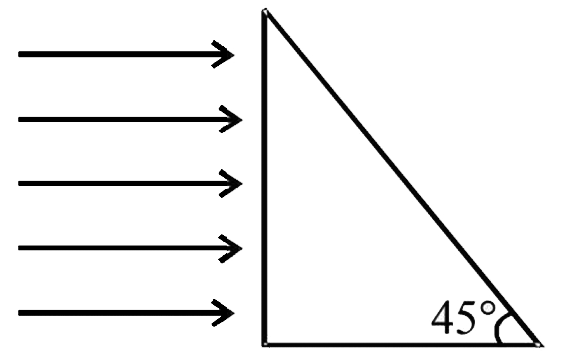
View SolutionCalculate the speed of light in a medium whose critical angle is `45^@`.
View SolutionVelocity of light in a liquid is `1.5 xx 10^(8) m//s` and in air, it is `3 xx 10^(8)m//s`. If a ray of light passes from this liquid to air, calculate the value of critical angle.
View SolutionA small air bubble in a glass sphere of radius `2 cm` appears to be `1 cm` from the surface when looked at, along a diameter. If the refractive index of glass is `1.5`, find the true position of the air bubble.
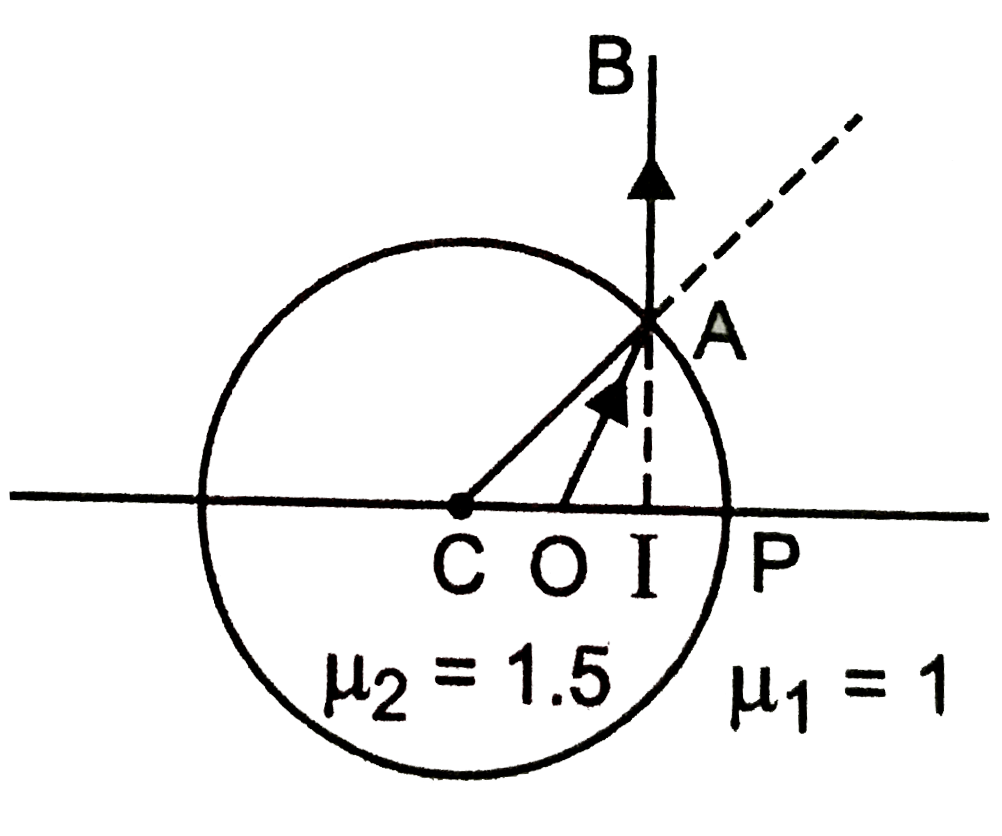 .
.
View SolutionAn object is placed `50 cm` from the surface of a glass sphere of radius `10 cm` along the diameter. Where will the final image be formed after refraction at both the surfaces ? `mu` of glass `=1.5`.
View SolutionA spherical surface of radius 30 cm separates two transparent media A and B with refractive indices 1'33 and 1.48 respectively. The medium A is on the convex side of the surface. Where should a point object be placed in medium A so that the paraxial rays become parallel after refraction at the surface ?
View SolutionAn air bubble in a glass sphere `(mu = 1.5)` is situated at a distance `3 cm` from a convex surface of diameter `10 cm`. At what distance from the surface will the bubble appear ?
View SolutionA convex refracting surface of radius of curvature `20 cm` separates two media of refractive indices `4//3 and 1.60`. An object is placed in the first medium `(mu = 4//3)` at a distance of `200 cm` from the refracting surface. Calculate the position of image formed.
View SolutionA sphere of glass `(mu = 1.5)` is of `20 cm` diameter. A parallel beam enters it from one side. Where will it get focussed on the other side ?
View SolutionA beam of light strikes a glass sphere of diameter `15 cm` convering towards a point `30 cm` behind the pole of the spherical surface. Find the position of the image, if `mu` of glass is `1.5`.
View SolutionOne end of a horizontal cylindrical glass rod `(mu=1.5)` of radius 5.0 cm is rounded in the shape of a hemisphere. Asnobject 0.5 mm high is placed perpendicular to the axis of the rod at a difference of 20.0 cm from the rounded edge. Locate the image of the object and find its height.
View SolutionA spherical convex surface separates object and image space of refractive index `1.0 and 4/3.` If radius of curvature of the surface is `10cm,` find its power.
View SolutionThe radii of curvatureof double convex lens of glass `(mu = 1.5)` are in the ratio of `1 : 2`. This lens renders the rays parallel coming from an illuminated filament at a distance of `6 cm`. Calculate the radii of curvature of its surfaces.
View SolutionA convex lens of focal legnth `0.2 m` and made of glass `(mu = 1.50)` is immersed in water `(mu = 1.33)`. Find the change in the focal length of the lens.
View SolutionA converging lens has a focal length of `20 cm` in air. It is made of a material of refractive index `1.6`. If it is immersed in a liquid of refractive index `1.3`, what will be its new foacl length ?
View SolutionThe radii of curvature of each surface of a convex lens is `20 cm` and the refractive index of the material of the lens is `3//2` (i) Calculate its focal length (ii) If this is cut along the plane `AB`. What will be formed ? (iii) What happens if the lens is cut along `CD` ?
View SolutionA convex lens made up of glass of refractive index `1.5` is dippedin turn
(i) in a medium of refractive index `1.65`
(ii) in a medium of refractive index `1.33`
(a) Will it behave as converging or diverging lens in the two cases ?
(b) How will its focal length changes in the two media ?
View SolutionA diverging lens of refractive index `1.5` and focal length `15 cm` in air has same radii of curvature for both sides. If it is immersed in a liquid of refractive index `1.7`, calculate focal length of the lens in liquid.
View SolutionThe radii of curvature of the surfaces of a double convex lens are `20 cm and 30 cm`. What will be its focal length and power in air and water respectively ? Refractive indices for glass and water are `3//2 and 4//3` respectively.
View SolutionA convex lens made up of glass of refractive index `1.5` is dippedin turn
(i) in a medium of refractive index `1.65`
(ii) in a medium of refractive index `1.33`
(a) Will it behave as converging or diverging lens in the two cases ?
(b) How will its focal length changes in the two media ?
View SolutionA biconvex lens is made of glass with `mu = 1.52`. Each surface has a radius of curvature equal to `30 cm`. An object of height `3 cm` is placed `14 cm` from the lens. Find the focal length of the lens and the position and size of image.
View SolutionA concave lens has same radii of curvature for both sides and is made of material of refractive in index `1.6` It is immersed in a liquid of `mu = 1.4` Calculate ratio of focal lengths of lens in air and liquid.
View SolutionA double convex lens of glass of refractive index `1.6` has its both surfaces of equal radii of curvature of `30 cm `each. An object of height `5 cm` is placed at a distance of `12.5 cm` from the lens. Calculate the size of the image formed.
View SolutionConvex lens is made of glass of refractive index `1.5` If the radius of curvature of each of the two surfaces is `20 cm` find the ratio of the powers of the lens, when placed in air to its power, when immersed in a liquid of refractive index `1.25`.
View SolutionA glass convex lens has a power of `+ 10 D` . When this lens is totally immersed in a liquid, it acts as a concave lens of focal length `50 cm`. Calculate the refractive index of the liquid. Given `.^a mu_g = 1.5`.
View SolutionA convex lens of focal length `20 cm` and made of glass `(mu = 1.5)` is immersed in water of `mu = 1.33` Calculate change in focal length of the lens.
View SolutionA thin converging lens made of glass of refractive index `1.5` acts as a concave lens of focal length `50 cm`, when immersed in a liquid of refractive index `15//8`. Calculate the focal length of converging lens in air.
View SolutionFind the radius of curvature of convex surface of a plano convex lens, whose focal length is `0.3 m and mu = 1.5`.
View SolutionA corverging lens has a focal length of `20 cm` in air. It is made of a material of refractive index `1.6`. If is immersed in a liquid of refractive index `1.3`, what will be its new focal length ?
View SolutionA diverging lens of refractive index `1.5` and focal length `15 cm` in air has same radii of curvature for both sides. If it is immersed in a liquid of refractive index `1.7`, calculate focal length of the lens in liquid.
View SolutionFrom the ray diagram shown in Fig. calculte the focal length of concave lens.
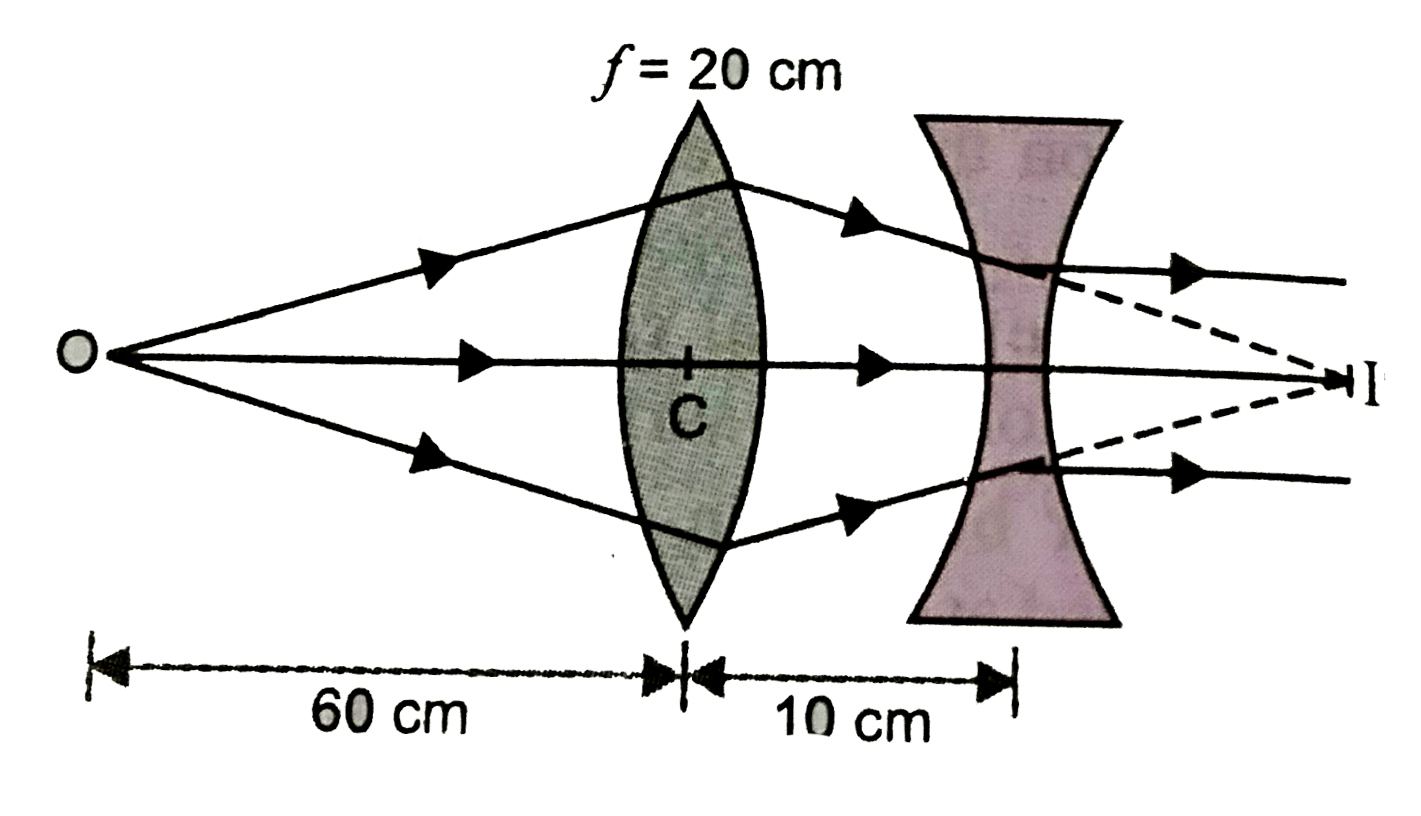 .
.
View SolutionA convex lens is used to throw on a screen `10 m` from the lens, a magnified image of an object. If the magnification is to be `19`, find the focal length of the lens.
View SolutionAn object is placed at a distance of `1.5 m` from a screen and a convex lens is interposed between them. The magnification produced is `4`. What is the focal length of the lens ?
View SolutionA screen is placed `80 cm` from an object. The image of the object on the screen is formed by a convex lens at two different locations separated by `10 cm`. Calculate the focal length of the lens used.
View SolutionA convergent beam of light passes through a diverging lens of focal length `0.2 m` and comes to focus at a distance of `0.3 m` behind the lens. Find the position of the point at which the beam would converge in the absence of the lens.
View SolutionThe image obtained with a convex lens is erect and its length is `4` times the length of the object. If the focal length of lens is `20 cm`, calculate the object and image distances.
View SolutionAn illuminated object and a screen are placed `90 cm` apart. What is the focal length and nature of the lens required to produce a clear image on the screen twice the size of the object ?
View SolutionA convex lens of focal length `25 cm` is placed co-axially in contact with a concave lens of focal length `20 cm`. Determine the power of the combination. Will the system be converging or diverging in nature ?
View SolutionThe radius of curvature of the faces of a double convex lens are `10 cm and 15 cm`. If focal length of lens of lens is `12 cm`, find the refractive index of the material of th lens.
View SolutionA biconvex lens has focal length `(2)/(3)` times the radius of curvature of either surface. Calculate refraction index f material of the lens.
View SolutionAn object is placed at a distance of `1.5 m` from a screen and a convex lens is interposed between them. The magnification produced is `4`. What is the focal length of the lens ?
View SolutionFind the focal length and power of a convex lens, which when placed in contact with a concave lens of focal length `25 cm` forms a real image `5` times the size of the object placed `20 cm` from the combination.
View SolutionFind the focal length and nature of lens which should be placed in contact with a lens of focal length `10 cm` so that the power of the combination becomes 5 dioptre.
View SolutionTwo lenses, one diverging of power 2 diopyre and the other converging of power `6 dioptre` are combined together. Calculate focal length and power of the combination.
View SolutionTwo lenses of power `+ 10 D and - 5 D` are placed in contact,
(i) Calculate the focal length of the combination
(ii) where should an object be held from the combination so as to obtain a virtual image of magnification `2` ?
View SolutionA point object is placed `60 cm` in front of a convex lens of focal length `15 cm`. A plane mirror is placed `10 cm` behind the convex lens. Where is the image formed by the system ?
View SolutionA convex lens of focal length `15 cm`, and a concave mirror of radius of curvature `20 cm` are placed co-axially `10 cm` apart. An object is placed in front of convex lens so that there is no parallax between the object and its image formed by the combination. Find the position of the object.
View SolutionFig. shows a plane mirror `M` placed at a distance of `10 cm` from a concave lens `L`. A point object is placed at a distance of `60 cm` from the lens. The image formed due to refraction by the lens and reflection by the mirror is `30 cm` behind th mirror. What is the focal length of this lens ?
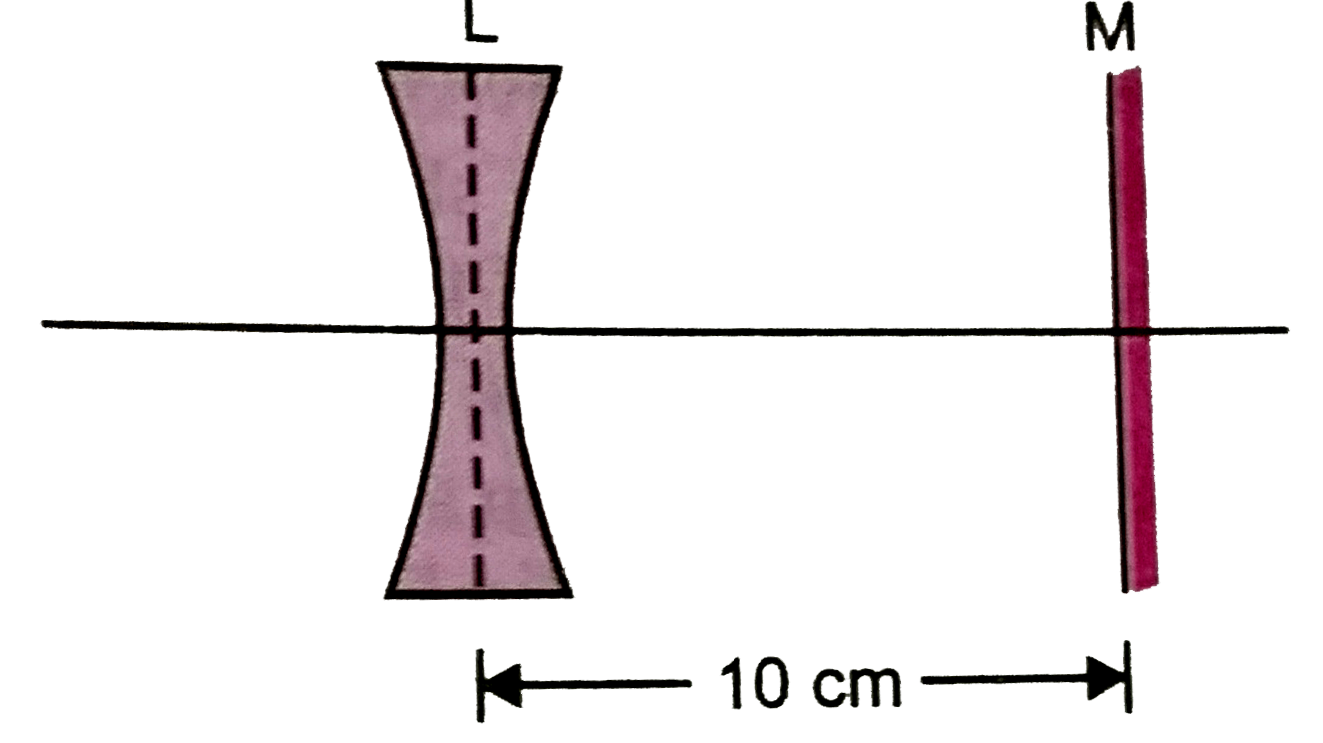 .
.
View SolutionMonochramatic light is incident on the pLane interface AB between two media of refractive indices `mu_1` and `mu_2(mu_2gtmu_1)` at an angle of incidence theta as shown in figure. The angle theta is infinitesimally greater thannte critical angle for the two media so thast total internal reflection takes place. Now, if a transparent slab DEFG of uniform thickness and of refractive inde `mu_2` is introduced on theinterface (as shown in figure ) , show that for any value of `mu_2` all light will ultimately be reflected back into medium II.
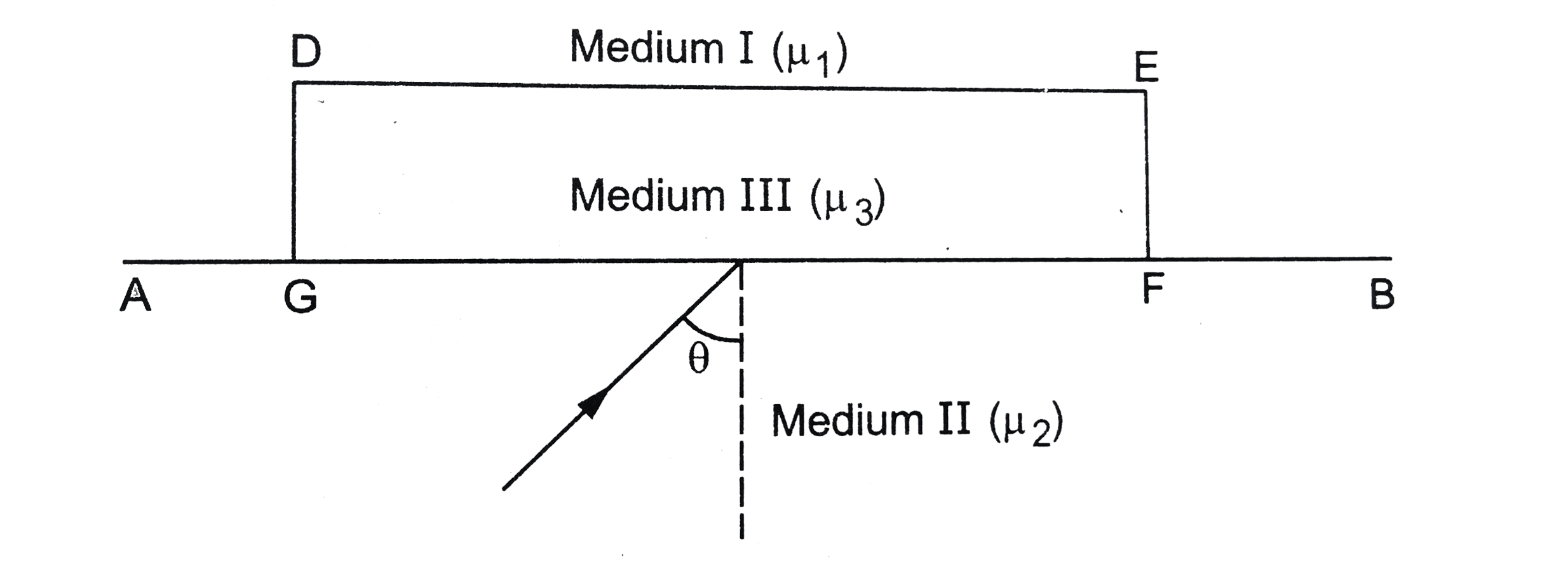
View SolutionThe image of a needle placed `45 cm` from a lens is formed on a screen placed `90 cm` on the other side of lens. Find displacement of image if object is moved `5 cm` away from lens.
View SolutionA biconvex thin lens is prepared from glass `(mu=1.5)`, the two bounding surfaces having equal radii of 25 cm each. One of the surfaces is silvered from outside to make it reflecting. Whee should an object be placed before this lens so that the image is formed on the object itself?

View SolutionA concave convex figure lens made of glas `(mu=1.5)` has surface of radii 20 cm and 60 cm. a. Locate the image ofan object placed 80 cm to the left of the lens along the principal axis. B. A similar lens is placed coaxially at distanc of 160 cm right of it. Locate the position of the image.
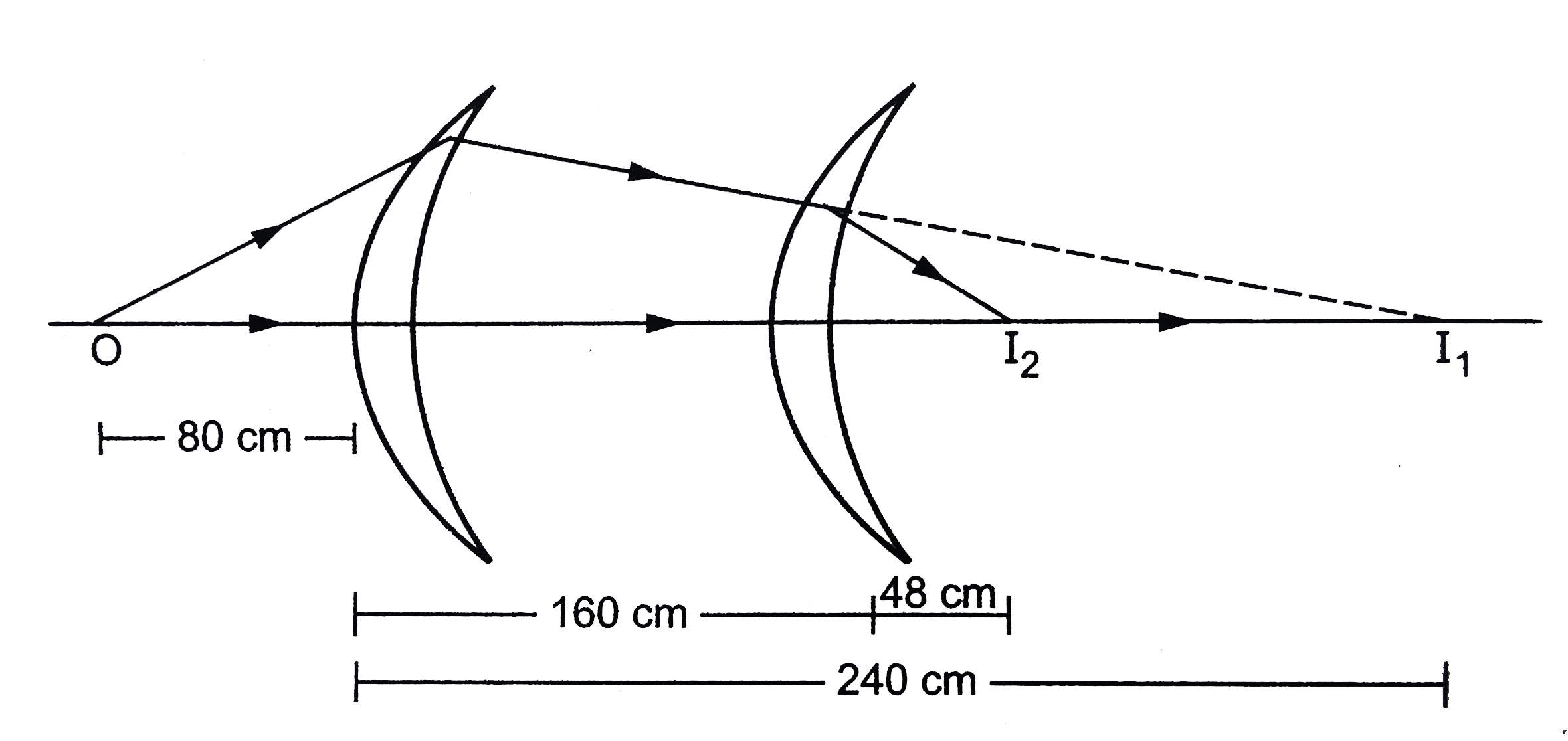
View SolutionA converging beam of light forms a sharp image on a screen. A lens is placed in the path of the beam at `10 cm` from the screen. It is found that the screen has to be moved `8 cm` further away from the lens to obtain a sharp image. Find the focal length and nature of the lens.
View SolutionRays of light are falling on a convex lens of focal length `40 cm`. As shown in Fig. Determine the position of the image.
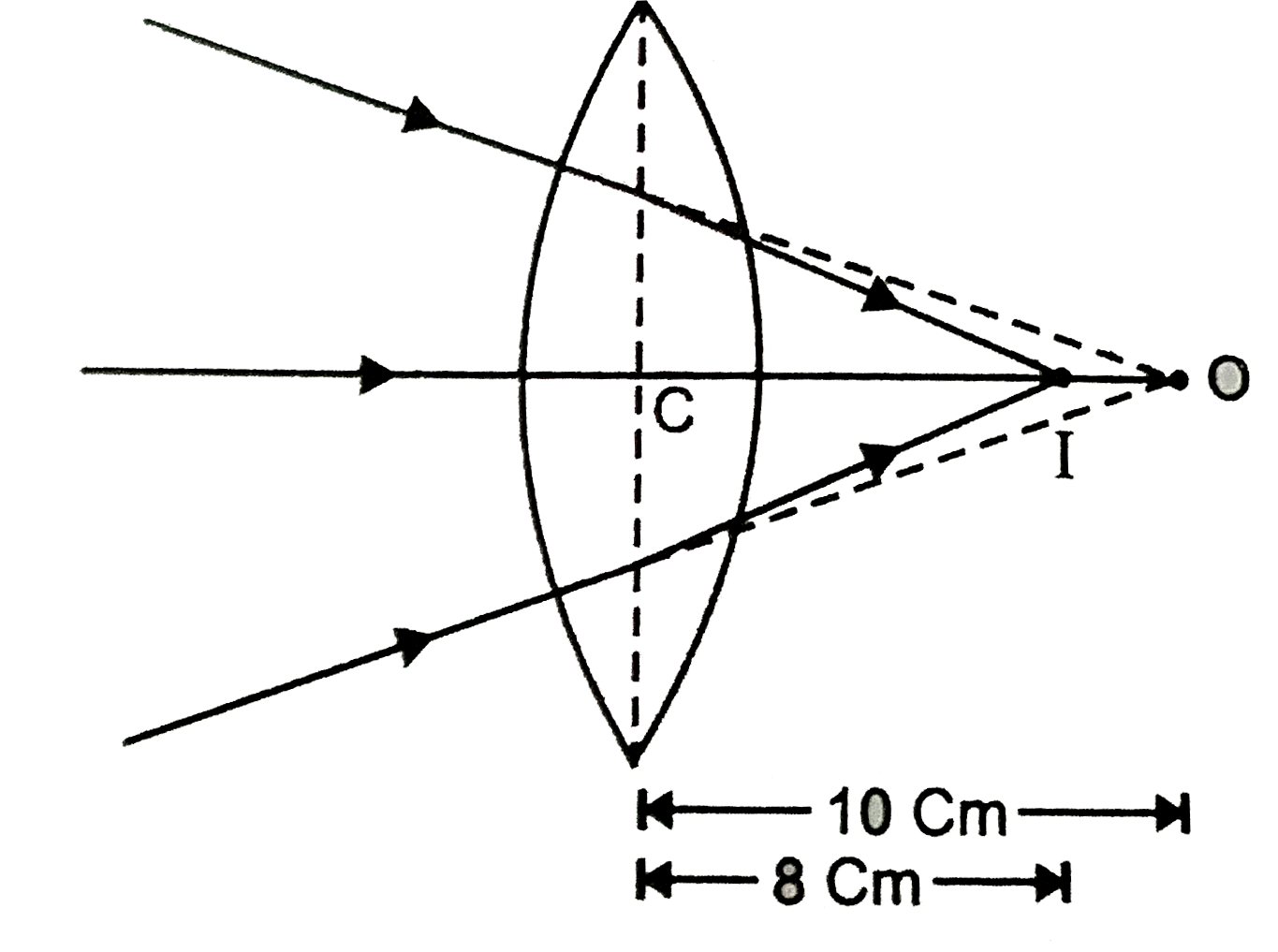 .
.
View Solution
Problem For Practice(b) questions and complete solutions for chapter RAY OPTICS of PRADEEP PHYSICS (HINGLISH) of Class 11
All Exercises from PRADEEP Class 11 PHYSICS RAY OPTICS
- (Competition)Comprehension
- (Competition)Multiple choice
- (Exemplar) Multiple choice
- (NCERT)Exercise With Solution
- (NCERT)Long Answer
- (NCERT)Short Answer
- (NCERT)Very Short Answer
- (Test Your Grip)Fill in the blanks (b)
- (Test Your Grip)Fill in the blanks (c)
- (Test Your Grip)Fill in the blanks (d)
- (Test Your Grip)Fill in the blanks(a)
- (Test Your Grip)Multiple Choice (b)
- (Test Your Grip)Multiple Choice (c)
- (Test Your Grip)Multiple Choice (d)
- (Test Your Grip)Multiple Choice(a)
- (Test Your Grip)Multiple Choice(sec -A)
- Assertion-Reason Question
- Conceptual Problem(a)
- Conceptual problem(b)
- Conceptual problem(c)
- Conceptual problem(d)
- Higher Thinking Order
- Integer Question
- Long Answer (a)
- Long Answer (b)
- Long Answer (c)
- Long Answer (d)
- Problem For Practice(a)
- Problem For Practice(b)
- Problem For Practice(c)
- Problem For Practice(d)
- Sample Problem(a)
- Sample problem(b)
- Sample problem(c)
- Sample problem(d)
- Short Answer(a)
- Short Answer(b)
- Short Answer(c)
- Short Answer(d)
- Solved Example(a)
- Solved Example(b)
- Solved Example(c )
- Solved Example(d)
- Very Short (a)
- Very Short Answer (b)
- Very Short Answer (c)
- Very Short Answer (d)